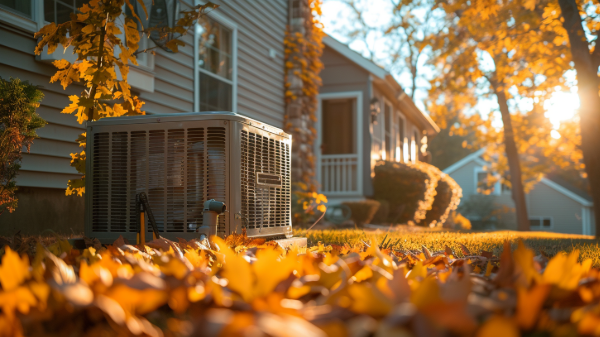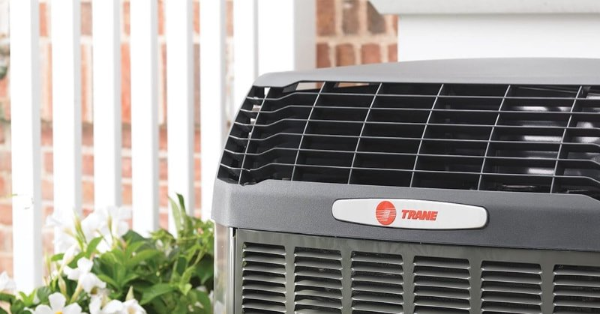What to Look for in an HVAC System When Buying a Home: A Beginner's Guide
Homebuyer’s HVAC Checklist for Smarter Purchases
Buying a new home? Don’t overlook the HVAC system—it’s one of the most expensive and essential parts of the house. Use this HVAC system home buying checklist to spot common red flags and make sure your new space is as comfortable and efficient as it should be.
HVAC System Home Buying Checklist
Step 1 – Determine the System’s Age and Efficiency
HVAC systems don’t last forever. Furnaces typically last 12–18 years, while air conditioners run about 10–16 years with proper maintenance. If the system is nearing the end of its lifespan, it may be time to budget for a replacement.
Check the unit’s nameplate or label for a manufacture date. If it’s hard to find or unreadable, a technician can often decode the serial number for you. Also, check the SEER (Seasonal Energy Efficiency Ratio) rating. A higher SEER means better efficiency, which translates to lower energy bills.
Step 2 – Ask for Maintenance Records
A well-maintained HVAC system is a good sign. Ask the seller or their agent for any service records. Regular maintenance means fewer issues and longer system life. If the homeowner can’t provide any records, proceed with caution. You may be inheriting a neglected system.
Look for signs of recent repairs or part replacements. Ask about any warranties that may still be active. Transferable warranties can add value and peace of mind.
Step 3 – Check Ductwork and Airflow
Ductwork is just as important as the furnace or AC. Damaged or leaky ducts can reduce airflow and efficiency. During your walk-through, look for exposed ducts in the basement or attic. Signs of rust, loose connections, or gaps are red flags.
Try to test the airflow in different rooms. Uneven temperatures or poor airflow could indicate duct issues, insulation problems, or a system that's too small for the home.
Step 4 – Inspect the Thermostat and Controls
Take a look at the thermostat. Is it programmable or smart, or is it an old manual dial? Upgrading to a smart thermostat can improve efficiency, but it could also indicate the previous owner wasn’t focused on energy-saving tools.
Make sure the system responds when you adjust the temperature. If you notice delays, unusual noises, or no response at all, the controls or internal components may need attention.
Step 5 – Evaluate for Energy Efficiency Features
Today’s HVAC systems often come with features designed to reduce energy usage. Look for ENERGY STAR® labels and advanced features like variable-speed motors or dual-fuel systems.
In mild climates, heat pumps can be a smart choice, while homes in colder regions may benefit more from high-efficiency gas furnaces. Zoned systems and high-SEER air conditioners can also help reduce operating costs in large homes.
Step 6 – Check for Red Flags Around the Outdoor Unit
Don’t forget the condenser unit outside. It should sit level on a solid base with at least two feet of clearance on all sides. Watch for signs of rust, bent fins, or oil stains, which may indicate refrigerant leaks.
Listen for strange sounds like rattling, grinding, or loud humming—these could signal loose parts or a failing compressor. A clean and well-kept exterior often reflects good overall maintenance.
Why Inspect the HVAC System When Buying a Home?
Heating and cooling systems are easy to take for granted—until something goes wrong. A broken furnace or inefficient air conditioner can lead to costly repairs, high energy bills, and an uncomfortable living space. Knowing what to look for can help you avoid expensive surprises and give you leverage when negotiating with the seller.
How To Inspect HVAC When Buying a Home Like a Pro
While a general home inspector will include the HVAC system in their review, they often don’t go deep enough. Consider hiring a licensed HVAC technician for a more thorough inspection, especially if the system is older or lacks maintenance records.
Here’s what a professional HVAC inspection might include:
- Measuring system airflow and temperature differentials
- Checking refrigerant levels and looking for leaks
- Inspecting the heat exchanger, blower motor, and evaporator coil
- Testing the thermostat and electrical controls
- Confirming proper system sizing for the home
- Assessing ductwork condition and insulation
A professional can ensure the system is performing efficiently and safely, helping you avoid future headaches.
Get Expert HVAC Inspection Help Before You Commit
Knowing how to inspect HVAC when buying a home gives you an advantage as a buyer. Our team can perform in-depth inspections, offer professional guidance, and give you peace of mind before you sign on the dotted line. Contact our expert team today!









